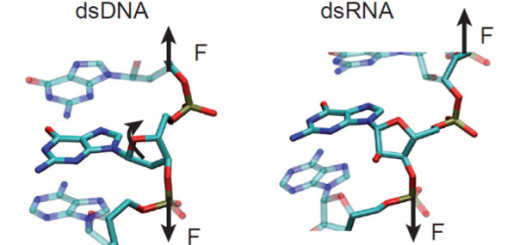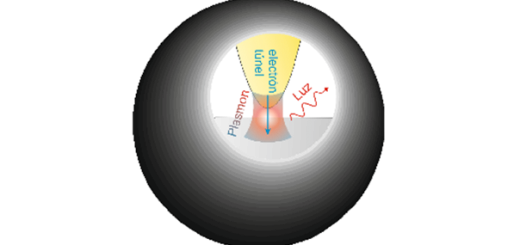Spinning the Current Around: a single magnetic impurity can reverse the current flow
Interference requires coherence, which is usually hard to come by in condensed matter environments. However, sometimes even short coherence times are sufficient to reveal most peculiar phenomena such as making it look like a supercurrent reverses its flow, which can be exploited for quantum sensing. An international collaboration of scientists between the Max-Planck-Institute for Solid State Research in Stuttgart, Ulm University, the Autonomous University of Madrid, and the University of Uppsala has now used such a supercurrent reversal to detect the ground state of a magnetic impurity coupled to a superconductor. Using a scanning tunneling microscope, they detect the interference in the Josephson current thereby creating a rudimentary phase sensitivity like in a superconducting quantum interference device (SQUID).
Magnetism and superconductivity have antagonistic tendencies towards each other in the sense that the former wants to align spins while the latter wants to anti-align them. A single magnetic impurity coupled to a superconductor through an exchange interaction will produce a single energy level inside the superconducting gap, a so-called Yu-Shiba-Rusinov (YSR) state. If the exchange interaction is weak, the spin of the impurity remains free, but as the exchange interaction increases, the YSR state undergoes a quantum phase transition and the spin of the impurity becomes screened. The spin of a single impurity atom thus has a strong influence on the local behavior of the superconductor. Spectroscopically it is a priori not possible to say in which ground state the YSR state is, the free or the screened spin state. Sensing the ground state of the YSR state has been quite challenging because probing the spin of the impurity is not trivial without using external magnetic fields. However, the Josephson effect is actually sensitive to the presence of a spin in the tunnel junction.
Researchers in Stuttgart, Ulm, Madrid, and Stockholm have used a scanning tunneling microscope (STM) to measure the Josephson current through an atomic scale YSR state to sense the ground state of the system. The Josephson current derives from the phase difference between two superconductors. The associated energy-phase relation of the YSR state undergoes a π-shift across the quantum phase transition, which is also known as a 0 − π-transition. The π-shift is equivalent to a sign change, such that the corresponding Josephson current may be seen as having a negative sign and hence flowing in the opposite direction. However, the STM is not sensitive to the phase, such that the π-shift has to be measured by a trick. “We were able to make the π-shift visible in the tunneling current by exploiting a second transport channel in the junction,” says Haonan Huang, who is working with his colleauge Sujoy Karan on the mK-STM, which is an STM operating at 10 mK (−273.14ºC). The second transport channel becomes the reference channel, which does not change, when the YSR state moves across the quantum phase transition. Much like in a superconducting interference device (SQUID), the interference between the YSR channel and the reference channel reveals the π-shift across the quantum phase transition. Even the short coherence times in the STM are long enough to visualize this effect.
The success of this experimental part is not just due to the low temperatures and the skilled preparation of the tunnel junction, but also to the extreme stability of the environment in Stuttgart’s Precision Laboratory, in which the mK-STM is located. The success of the whole project is the intricate interplay between theory and experiment. The international collaboration of experimentalists and theorists have created an overall consistent picture including many additional aspects, such as the role of Kondo correlations and the self-consistent order parameter. They have created essentially the smallest SQUID to detect a supercurrent reversal through a YSR state at the atomic scale. “We could scale the SQUID concept to the smallest limit. The loop area goes to zero but we can still detect the sign change,” says Christian Ast, “The closer we look, the bigger the picture.” [Full article]
Reference:
Superconducting quantum interference at the atomic scale, Sujoy Karan, Haonan Huang, Ciprian Padurariu, Björn Kubala, Andreas Theiler, Annica Black-Schaffer, Gonzalo Morrás, Alfredo Levy Yeyati, Juan Carlos Cuevas, Joachim Ankerhold, Klaus Kern, and Christian R. Ast, Nature Physics 18, 893 (2022). [URL]




















